Stay in the ’90s (or close) for the Best of Toyota’s Luxury Iron to Import from Japan Today
I’ve got some stories to tell you about my experience with Toyota luxury cars and about the feedback and info that some of my car fan friends here in Japan have shared with me, but first, let’s do a quick survey of the cars that we are looking at when we start talking direct import from Japan; the Toyota luxury machines that should be on your list when you are thinking: “I want to import a used luxury Toyota from Japan.”
And even before we talk machines, we’ve got to talk dates. And I don’t mean the dates with the babes that you are hoping to get when you have a cool, smooth, powerful, and high quality set of wheels, like a Crown
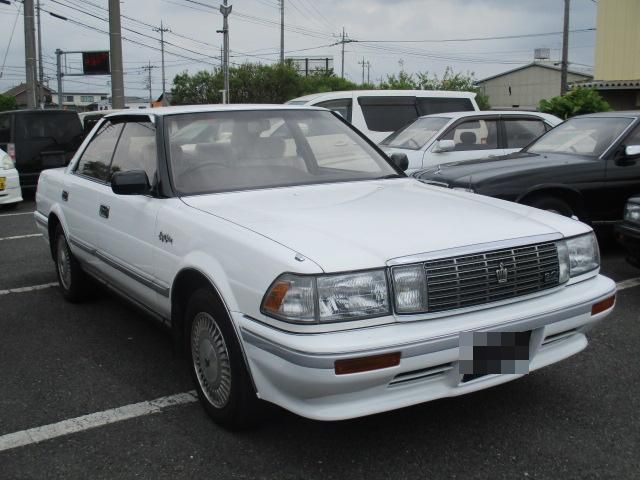
or a Crown Majesta,

(We recently exported a nice clean Majesta that you can see on our main Japan Car Direct site here.) or a “bad boy” Crown Athlete like this one that it was our pleasure to handle,
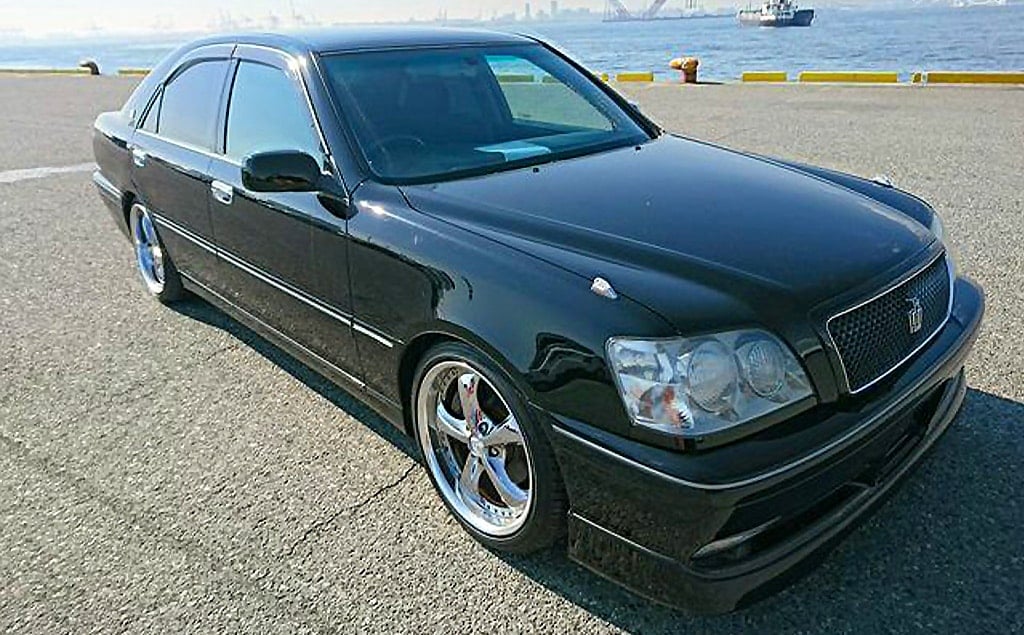
or a Celsior (Lexus LS400),
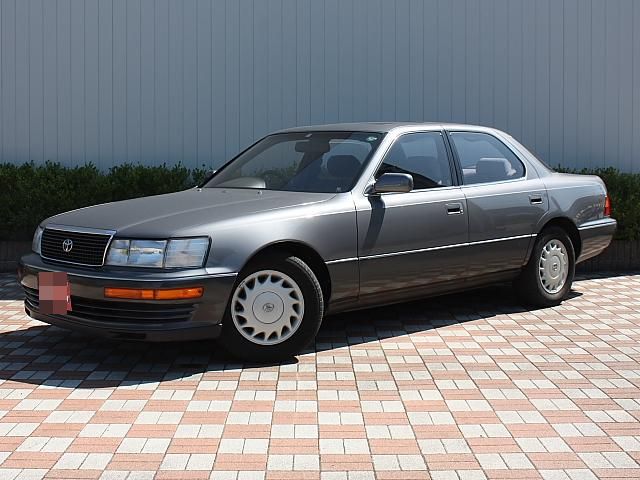
(Like this very handsome fellow here that we recently exported to the USA.) or a beautiful Soarer (the Lexus SC300 / SC400),
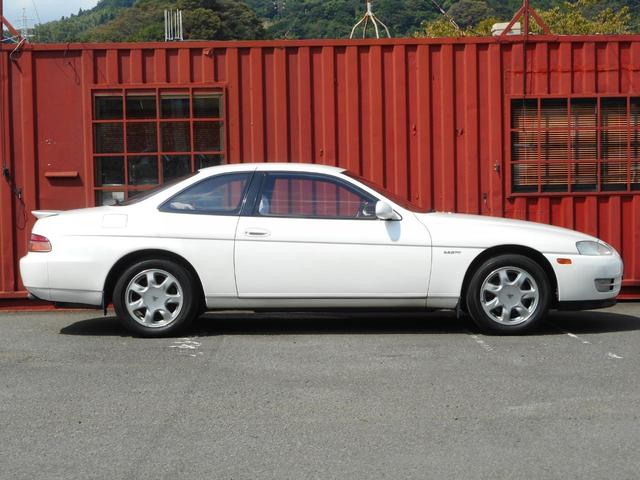
(Here’s one of the newer ones that we exported, the UZZ40 chassis Soarer, called the SC430 here, that I have watched being built at my factory, Higashi Fuji, here in my town in Japan.) or a Century.
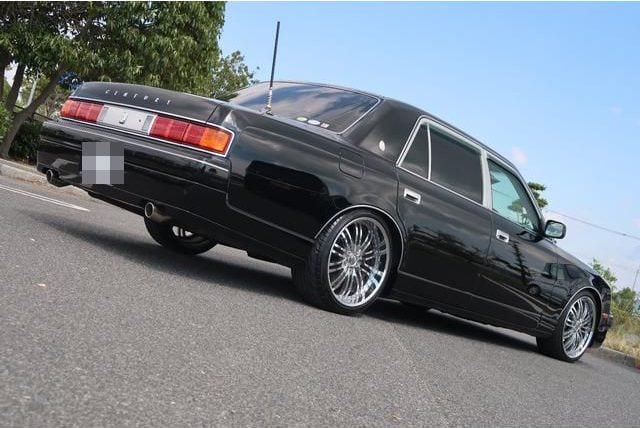
(I’ve had a good look around the shop where these gems are made, by hand to a large degree and by some of Toyota’s best craftsmen, and I’ll tell you about what I saw there in a later post in this series.)
These are the Toyota luxury cars we’ll be talking about in these posts now on our Japan Car Direct blog. (But if you’re more into Euro power, then have a look at our series on European Supercars from Japan here, here, and here.)
Now the dates I’m talking about are manufacturing dates.
The Best Years of Japanese Cars for Self Import
So what years are generally the best for used Japanese cars?
Easy to answer in my experience: Put your index finger bang on the year 1995 and then walk your fingers in either direction, forward or backward in time, for about ten years or so. Japanese cars from the ’90s are brilliant: styling, build quality, power, practicality, reliability, and more. These are good machines. And they are now becoming 25 years old and so are easy to import yourself direct from Japan to the USA or Australia, under their 25-year-old used car import rules. To the UK and Canada these, and even newer cars, are easy to import, but just keep in mind that “newer” does not at all necessarily mean “better.” For example, as we walk our fingers 10 years from 1995 to 2005, we find lots of good, well-designed and well-built Japanese used cars on the market today. Great stuff. But as we go farther forward from 2005, we do start to find machines that are getting maybe a bit excessively complex, heavy, and, in my opinion, less beautiful (as US and EU regulations start to limit what designers can do). There are lots and lots of exceptions to what I’m saying here, so, if you want to import a newer used car from Japan, don’t despair, there are many good, and good looking, cars. But I’m an unabashed fan of Japanese ’90s cars and I’m writing this article here from that perspective.
So walking back ten years from 1995, we find many lovely good units, some becoming classics now, like the Crown, of course, the earlier Centuries (G20, G30, and G40 Series machines—although the G40 cars actually ran till 1997, but they keep that classic look), and the earlier Z10 and Z20 Soarers; the epitome of ’80s the luxury cruiser concept.
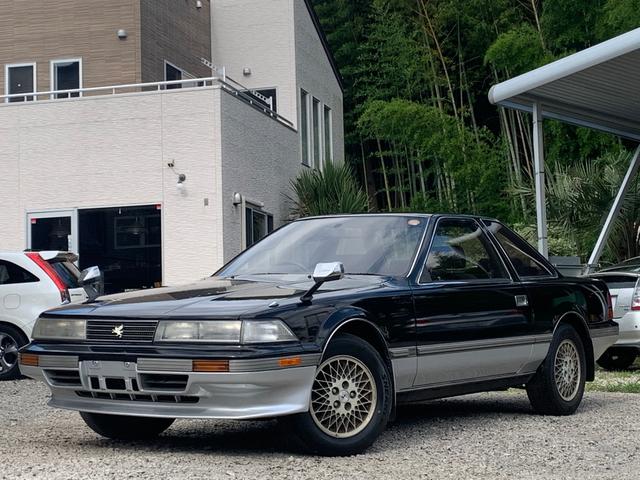
These cars are all sweet machines that give you both luxury and heritage.
But if we go back much farther than 1985 we can begin to see what a revolution in design and manufacture happened in the Japanese car world during the ’80s. Quite frankly, everything got much better: paint, steel quality, mechanical tolerances, combustion chamber design, suspension systems, braking systems, interior materials, and more; all these things leading to better fuel economy, longer lasting car interiors, better engine power, response, and lifespan, better handling and stopping, and more. So, if you’re thinking of importing a pre 1985 used car from Japan, I suggest that you proceed with caution. Don’t give up your dream though. If it’s a first series 1984 Toyota Corolla Levin or Sprinter Trueno, the famous “Hachi-Roku” (AE-86) that you’re hankering after, go for it! But just be ready for rather more maintenance than you would put into any ’90s Toyota. (And be ready for that truck-like shift feel on the AE86: it’s not like your Miata trans.)
“Someday, I’ll have a Crown.”
O.K., so: Best ’90s (roughly) Toyo lux machines. Let’s start with the classic of the classics of the stable: The Toyota Crown. (I’ll plug a photo here of the type that I had. Fender mirrors all the way, my Lads!)
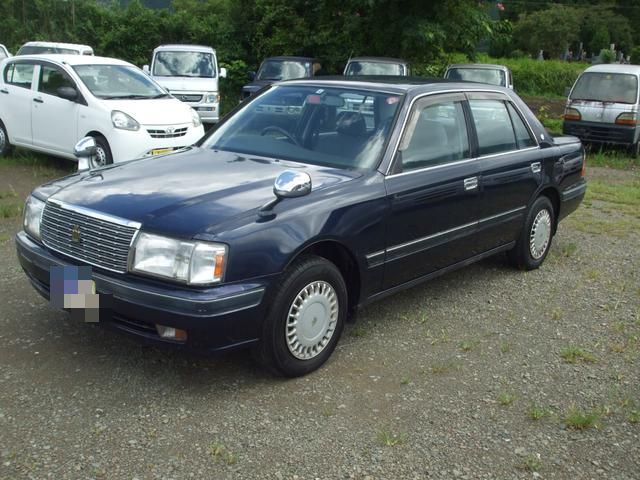
The Crown, which has had a very long production run indeed, kicked off in 1955. (Here’s an advertising pic from those days. You didn’t have to dress like this to own a Crown but my Dad always liked it when my Mom wore a kimono—no she’s not Japanese and it didn’t make him buy a Crown. He drove Mustangs, but my Mom does have a kimono.)
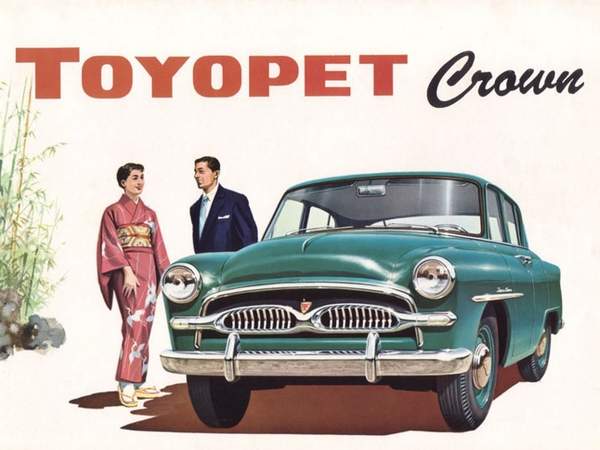
The vehicle started in the mid-size luxury bracket and there it remained for decades, never bloating out like so many cars do as they go through various iterations. Even the top of the range Crown Majesta never became a tub. In the long running series of Japanese radio and TV commercials advertising the Crown, the final voice-over line was always: “Itsuka-wa…..Crown!” which in English would be: “Someday, I’ll have a Crown!”
The S120 Series Toyota Crown
If we consider the best models of the Toyota Crown to import from Japan today (mid 2020), the seventh generation, the S120 is where we should start, and we’ll find our oldest recommended model year, 1985, falls right in the middle of S120 series production, which went from 1983 to 1987.
These Crowns have a delightful (in fact “cool” in my opinion) retro look with their sharp edges and fender mirror option. They come up in decent numbers in the second hand car market in Japan these days and are often in very good shape because they are now becoming early classics, and they also have a “bad boy” following.
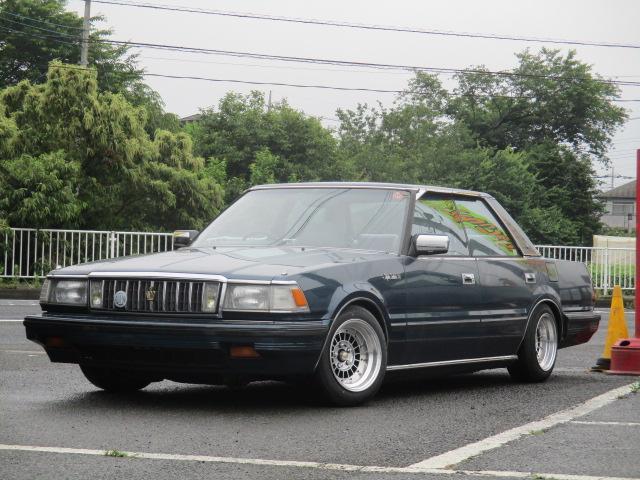
So, they are not exactly cheap anymore at the dealers, and the Japanese used car auctions are the place to score bargains now on an S120 series Crown Sedan. From the parts point of view things are pretty decent and, not only are there lots of these cars still on the road, they also share many parts with later series Crowns and with other Toyota vehicles, like the Supra 70.
In terms of the engine options to consider, all of the Crowns worth your time in the S120 series come with straight six engines: the 3.0 liter 6M, the 2.8 liter 5M (shared with the older Soarers), the 2.0 liter M (normally aspirated or turbo-charged) and the 1G (either normally aspirated or, believe it or not, supercharged.) The 4 cylinder diesels and the 4 cylinder “poverty spec” gas engines are best avoided in my view as….well…this is a Crown, right? A Toyota Crown we’re talking about. It’s a classic luxury car and classic luxury cars come with smooth and torquey straight sixes or V8s, right? (Or V12s if you’re a Daimler man.) So no four pots and no diesels. (Actually, the four cyl and diesel S120 Crowns almost never come up here in Japan. I’ve never seen, sold, or smelled one.)
Now, the M-series engines are fine all round power plants for their years, but the Toyota 1G engine deserves some special discussion because 1) it is a lovely piece of motor engineering, 2) it often comes up in the best deals you’ll find in Japan on used Toyota Crowns, 3) you need to be clear about the plusses and minuses of the various 1G options and, 4) I’ve owned one myself and loved it.
The Toyota 1G Engine
My Crown (1997 with four speed auto trans) came with the 1G-FE. It’s a straight six, DOHC, 24 valve unit with narrow valve angle for fuel economy and it runs an easy-going 9.6:1 compression ratio that allows the engine to burn cheaper regular gas. It’s a square engine with bore and stroke both at 75mm. (You can guess the narrow valve angle from looking at the cam cover here.)
The 1G is a very, very well-balanced unit and gives that silky smoothness that a luxury car engine should have (which is why the straight six, along with the cross-plane V8, is the traditional luxury car engine). In addition, the engine has good grunt from a standing start, which is something that we also expect from a luxury car. But, at 1,988cc, it’s not a massive hog and so I found fuel economy to be quite decent and the ability to burn regular a nice little plus. Interestingly enough (and my brother Toyota engine fans can correct me here if I’m wrong), I think that the G is the only modern Toyota engine that only ever came in one size. Usually a Toyota engine, named by letter codes, A, E, S, etc., comes in various sizes with variations of bore, or stroke, or both. In the G engine family there’s only the 1,988cc option.
Where I noticed the 1G’s limitations in my Crown was in this situation: I’m cruising down the highway at the speed limit, maybe a bit over, (ahem!) and I want to go faster (of course I wouldn’t!) and so I put the pedal down. The car accelerates decently, but does not leap forward as it does from a standing start or even in a mid-speed situation around town. Highway passing power is there, yes, but not gobs of it.
“The Sky’s the Limit.”
Another plus of a 1G engine Toyota Crown is the engine (and drivetrain) lifespan: These engines last and last! I was talking once to the designer of my Crown and he told me that 1G engines were very commonly used in Toyota’s various taxi offerings and that they easily, easily racked up 500,000 to 600,000 kilometers (310,000 to 370,000 miles) in hard taxi service in Hong Kong and Singapore.
“And those are the minimums, with indifferent maintenance,” he said.
“What about with love and care?” I asked him. “How far will a 1G go then?”
“Ach! We don’t know. I’d say the sky’s the limit. Probably will outlast the body of the car.”
So with all the many big-engined Toyota Crowns available in Japan today (we’re talking 2.5 liters, 3.0 liters, 4.0 liters with those babies) don’t over look the 2.0 liter Crowns. They are fine luxury cars aaaaand…….they are coming up cheap in the second hand market in Japan today! You can get fine 1G Crowns in good shape and for good money for export to the USA, Australia, Canada, the UK, and Europe. Nicely overlooked treasures, they are.
And now that we are talking good prices on a second hand Toyota Crown from Japan, let’s look at the next series of these cars, as that is where the sweet deals (and sweet cars) are at the moment. So in our next blog post here at Japan Car Direct we’ll look at the 130, 140, 150 (mine!), 170, and 180 Series Toyota Crowns.
And I’ll tell you more about my Toyota Crown, the car I was “not supposed to have.”
Until then, start dreaming of your nice clean secondhand Toyota Crown imported direct from Japan, because this is a dream you can easily make come true, and we at Japan Car Direct are here to help you make such dreams into happy realities; it’s the best part of our job.


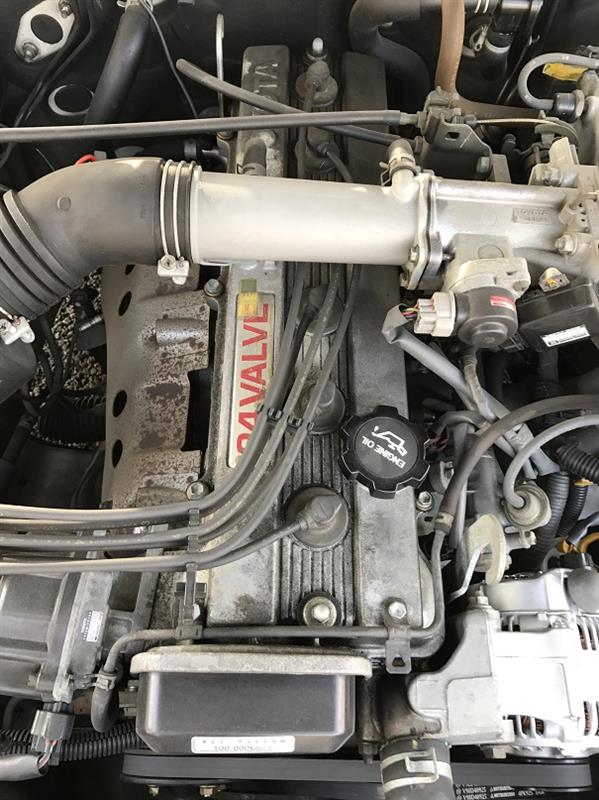

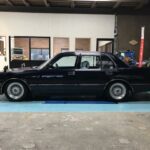



























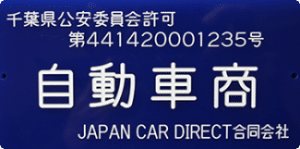

Leave your questions and comments, we look forward to replying!